Instruction
How I train tour players
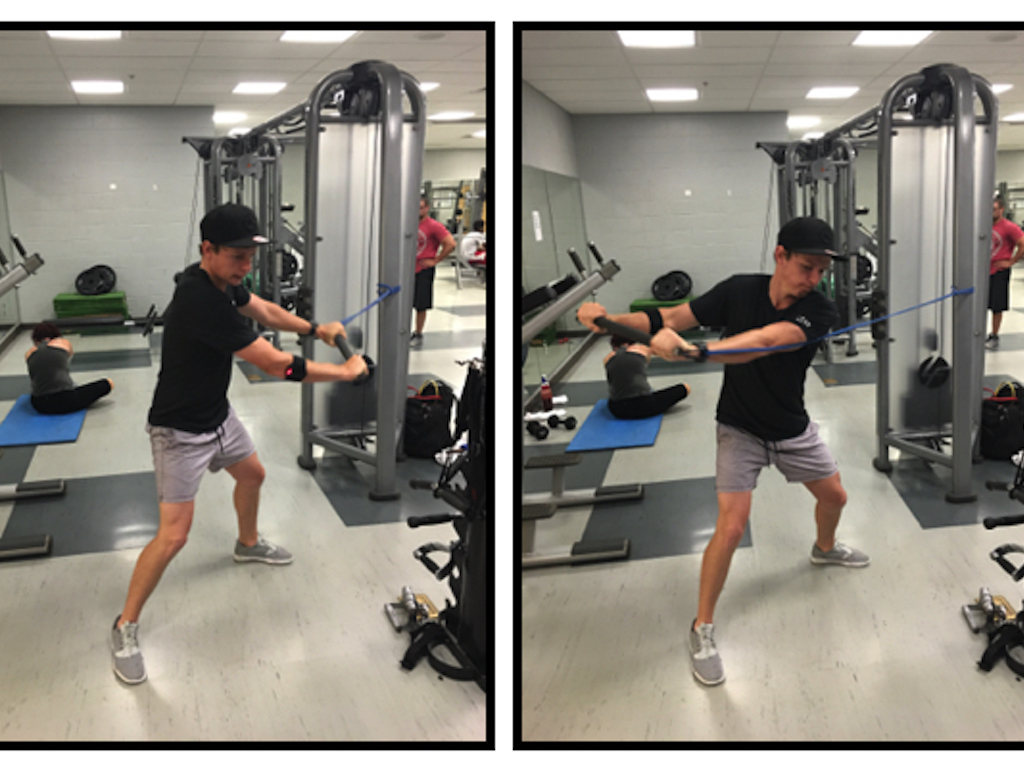
There is a lot of speculation about how tour pros train, and with tantalizing snippets of gym sessions being shared on social media, it’s tempting to draw large conclusions from small amounts of insight. One thing I can tell you from my time on tour is that there isn’t just one way that golfers should train, far from it. I’ve seen many different approaches work for many different pros, a strong indicator is the wide variety of body shapes we see at the top level of the game. Take for example Brooks Koepka, Mark Leishman, Ricker Fowler, and Patrick Reed. Put these four players through a physical testing protocol and the results would be extremely varied, and yet, over 18 holes of golf there is just 0.79 shots difference between first and last.
This example serves to highlight the importance of a customized approach to training. Sometimes common sense training programs backed by scientific evidence simply don’t work for an individual. One of the athletes I work with, Cameron Smith, over the course of a season recorded his slowest club-head speed when he was strongest and heaviest (muscle mass) and fastest club-head speed when he was lightest and weakest. That lead me to seriously question the widely accepted concept of stronger = more powerful and instead search for a smarter and more customized methodology. I’ll continue to use Cam and his training as an example throughout this article.
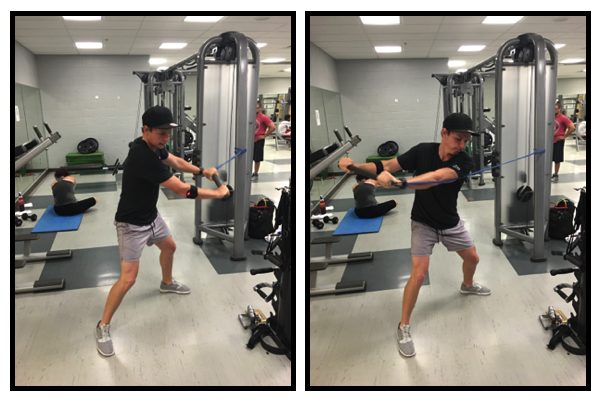
Cam working on his rotational speed (push band on his arm)
What I’m going to outline below is my current method of training tour pros, it’s a fluid process that has changed a lot over the years and will hopefully continue to morph into something more efficient and customized as time goes on.
Assessment
I have poached and adapted aspects from various different testing methods including TPI, GravityFit, Ramsay McMaster, Scott Williams and Train With Push. The result is a 5-stage process that aims to identify areas for improvement that can be easily compared to measure progress.
Subjective – This is a simple set of questions that sets the parameters for the upcoming training program. Information on training and injury history, time available for training, access to facilities and goal setting all help to inform the structure of the training program design that will fit in with the individual’s life.
Postural – I take photos in standing and golf set up from in-front, behind and both sides. I’m simply trying to establish postural tendencies that can be identified by alignment of major joints. For example a straight line between the ear, shoulder, hip and ankle is considered ideal.
Muskulo Skeletal – This is a series of very simple range of motion and localized stability tests for the major joints and spinal segments. These tests help explain movement patterns demonstrated in the gym and the golf swing. For example ankle restrictions make it very difficult to squat effectively, whilst scapula (shoulder blade) instability can help explain poor shoulder and arm control in the golf swing.
Stability and Balance – I use a protocol developed by GravityFit called the Core Body Benchmark. It measures the player’s ability to hold good posture, balance and stability through a series of increasingly complex movements.
Basic Strength and Power – I measure strength relative to bodyweight in a squat, push, pull and core brace/hold. I also measure power in a vertical leap and rotation movement.
At the age of 16, Cam Smith initially tested poorly in many of these areas; he was a skinny weak kid with posture and mobility issues that needed addressing to help him to continue playing amateur golf around the world without increasing his risk of injury.

An example scoring profile
Report
From these 5 areas of assessment I write a report detailing the areas for improvement and set specific and measurable short terms goals. I generally share this report with the player’s other team members (coach, manager, caddie etc).
Training Program
Next step is putting together the training program. For this I actually designed and built (with the help of a developer) my own app. I use ‘Golf Fit Pro’ to write programs that are generally split into 3 or 4 strength sessions per week with additional mobility and posture work. The actual distribution of exercises, sets, reps and load (weights) can vary a lot, but generally follows this structure:
Warm Up – foam roll / spiky ball, short cardio, 5 or 6 movements that help warm up the major joints and muscles
Stability / Function – 2 or 3 exercises that activate key stability/postural muscles around the hips and shoulders.
Strength / Power – 4 or 5 exercises designed to elicit a strength or power adaptation whilst challenging the ability to hold posture and balance.
Core – 1 or 2 exercises that specifically strengthen the core
Mobility – 5-10 stretches, often a mixture of static and dynamic
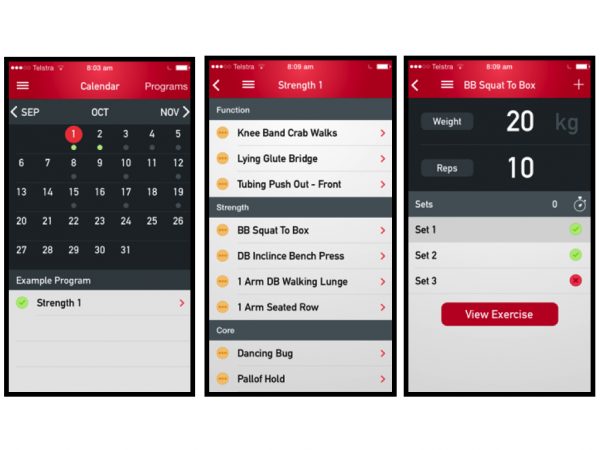
An example of the Golf Fit Pro app
Cam Smith has followed this structure for the entire time we have been working together. His choice would be to skip the warm-up and stability sections, instead jumping straight into the power and strength work, which he considers to be “the fun part.” However, Cam also recognizes the importance of warming up properly and doing to his stability drills to reduce the risk of injury and make sure his spine, hips and shoulders are in good posture and moving well under the load-bearing strength work.
Training Sessions
My approach to supervising training sessions is to stick to the prescribed program and focus attention firstly on perfecting technique and secondly driving intent. What I mean by this is making sure that every rep is done with great focus and determination. I often use an accelerometer that tracks velocity (speed) to measure the quality and intent of a rep and provide immediate feedback and accountability to the individual.
Cam especially enjoys using the accelerometer to get real-time feedback on how high he is jumping or fast he is squatting. He thrives on competing with both himself and others in his gym work, pretty typical of an elite athlete!
Maintenance
The physical, mental and emotional demands of a tournament week make it tricky to continue to train with the same volume and intensity as usual. I will often prescribe a watered down version of the usual program, reducing reps and sets whilst still focusing on great technique. Soreness and fatigue are the last thing players want to deal with whilst trying to perform at their best. It’s quite the balancing act to try and maintain fitness levels whilst not getting in the way of performance. My experience is that each player is quite different and the process has to be fluid and adaptable in order to get the balance right from week to week.
Equipment
Aside from the usual gym equipment, resistance bands, and self massage tools, the following are my favourite bits of kit:
GravityFit – Absolutely the best equipment available for training posture, stability and movement quality. The immediate feedback system means I can say less, watch more and see players improve their technique and posture faster.
Push Band – This wearable accelerometer has really transformed the way I write programs, set loads and measure progression. It’s allowed the whole process to become more fluid and reactive, improved quality of training sessions and made it more fun for the players. It also allows me to remotely view what has happened in a training session, down to the exact speed of each rep, as demonstrated in the image below.
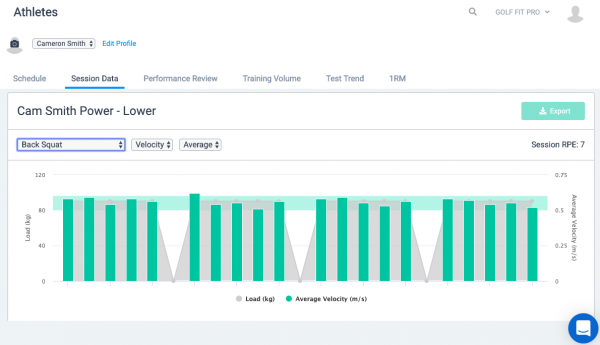
Details from one of Cam’s recent training sessions
Examples
Below are some of the PGA Tour players that I have worked with and the key areas identified for each individual, based of the process outlined above:
Cam Smith – Improving posture in head/neck/shoulders, maintenance of mobility throughout the body, increasing power output into the floor (vertical force) and rotational speed.
Jonas Blixt – Core stability, hip mobility and postural endurance in order to keep lower back healthy (site of previous injury). Overall strength and muscle growth.
Harris English – Improving posture in spine, including head/neck. Scapula control and stability, improving hip and ankle mobility. Overall strength and muscle growth.
Recommendations
My advice if you want to get your fitness regime right, is to see a professional for an assessment and personalized program, then work hard at it whilst listening to your body and measuring results. I’m sure this advice won’t rock your world, but from all that I’ve seen and done on tour, it’s by far the best recommendation I can give you.
If you are a golfer interested in using a structured approach to your golf fitness, then you can check out my online services here.
If you are a fitness professional working with golfers, and would like to ask questions about my methods, please send an email to [email protected]
- LIKE98
- LEGIT13
- WOW1
- LOL1
- IDHT0
- FLOP0
- OB1
- SHANK6
Instruction
Clement: Laid-off or perfect fade? Across-the-line or perfect draw?

Some call the image on the left laid off, but if you are hitting a fade, this could be a perfect backswing for it! Same for across the line for a draw! Stop racking your brain with perceived mistakes and simply match backswing to shot shape!
- LIKE0
- LEGIT0
- WOW0
- LOL0
- IDHT0
- FLOP0
- OB0
- SHANK1
Instruction
The Wedge Guy: The easiest-to-learn golf basic

My golf learning began with this simple fact – if you don’t have a fundamentally sound hold on the golf club, it is practically impossible for your body to execute a fundamentally sound golf swing. I’m still a big believer that the golf swing is much easier to execute if you begin with the proper hold on the club.
As you might imagine, I come into contact with hundreds of golfers of all skill levels. And it is very rare to see a good player with a bad hold on the golf club. There are some exceptions, for sure, but they are very few and very far between, and they typically have beat so many balls with their poor grip that they’ve found a way to work around it.
The reality of biophysics is that the body moves only in certain ways – and the particulars of the way you hold the golf club can totally prevent a sound swing motion that allows the club to release properly through the impact zone. The wonderful thing is that anyone can learn how to put a fundamentally sound hold on the golf club, and you can practice it anywhere your hands are not otherwise engaged, like watching TV or just sitting and relaxing.
Whether you prefer an overlap, interlock or full-finger (not baseball!) grip on the club, the same fundamentals apply. Here are the major grip faults I see most often, in the order of the frequency:
Mis-aligned hands
By this I mean that the palms of the two hands are not parallel to each other. Too many golfers have a weak left hand and strong right, or vice versa. The easiest way to learn how to hold the club with your palms aligned properly is to grip a plain wooden ruler or yardstick. It forces the hands to align properly and shows you how that feels. If you grip and re-grip a yardstick several times, then grip a club, you’ll see that the learning curve is almost immediate.
The position of the grip in the upper/left hand
I also observe many golfers who have the butt of the grip too far into the heel pad of the upper hand (the left hand for right-handed players). It’s amazing how much easier it is to release the club through the ball if even 1/4-1/2″ of the butt is beyond the left heel pad. Try this yourself to see what I mean. Swing the club freely with just your left hand and notice the difference in its release from when you hold it at the end of the grip, versus gripping down even a half inch.
To help you really understand how this works, go to the range and hit shots with your five-iron gripped down a full inch to make the club the same length as your seven-iron. You will probably see an amazing shot shape difference, and likely not see as much distance loss as you would expect.
Too much lower (right) hand on the club
It seems like almost all golfers of 8-10 handicap or higher have the club too far into the palm of the lower hand, because that feels “good” if you are trying to control the path of the clubhead to the ball. But the golf swing is not an effort to hit at the ball – it is a swing of the club. The proper hold on the club has the grip underneath the pad at the base of the fingers. This will likely feel “weak” to you — like you cannot control the club like that. EXACTLY. You should not be trying to control the club with your lower/master hand.
Gripping too tightly
Nearly all golfers hold the club too tightly, which tenses up the forearms and prevents a proper release of the club through impact. In order for the club to move back and through properly, you must feel that the club is controlled by the last three fingers of the upper hand, and the middle two fingers of the lower hand. If you engage your thumbs and forefingers in “holding” the club, the result will almost always be a grip that is too tight. Try this for yourself. Hold the club in your upper hand only, and squeeze firmly with just the last three fingers, with the forefinger and thumb off the club entirely. You have good control, but your forearms are not tense. Then begin to squeeze down with your thumb and forefinger and observe the tensing of the entire forearm. This is the way we are made, so the key to preventing tenseness in the arms is to hold the club very lightly with the “pinchers” — the thumbs and forefingers.
So, those are what I believe are the four fundamentals of a good grip. Anyone can learn them in their home or office very quickly. There is no easier way to improve your ball striking consistency and add distance than giving more attention to the way you hold the golf club.
More from the Wedge Guy
- The Wedge Guy: Golf mastery begins with your wedge game
- The Wedge Guy: Why golf is 20 times harder than brain surgery
- The Wedge Guy: Musings on the golf ball rollback
- LIKE88
- LEGIT14
- WOW6
- LOL1
- IDHT0
- FLOP4
- OB1
- SHANK8
Instruction
Clement: Stop ripping off your swing with this drill!

Not the dreaded headcover under the armpit drill! As if your body is defective and can’t function by itself! Have you seen how incredible the human machine is with all the incredible feats of agility all kinds of athletes are accomplishing? You think your body is so defective (the good Lord is laughing his head off at you) that it needs a headcover tucked under the armpit so you can swing like T-Rex?
- LIKE0
- LEGIT3
- WOW2
- LOL0
- IDHT0
- FLOP0
- OB0
- SHANK2
-

 19th Hole2 weeks ago
19th Hole2 weeks agoJustin Thomas on the equipment choice of Scottie Scheffler that he thinks is ‘weird’
-

 19th Hole2 weeks ago
19th Hole2 weeks ago‘Absolutely crazy’ – Major champ lays into Patrick Cantlay over his decision on final hole of RBC Heritage
-

 19th Hole3 weeks ago
19th Hole3 weeks agoTwo star names reportedly blanked Jon Rahm all week at the Masters
-

 19th Hole3 weeks ago
19th Hole3 weeks agoReport: LIV Golf identifies latest star name they hope to sign to breakaway tour
-

 19th Hole3 weeks ago
19th Hole3 weeks agoNeal Shipley presser ends in awkward fashion after reporter claims Tiger handed him note on 8th fairway
-

 19th Hole2 weeks ago
19th Hole2 weeks agoBrandel Chamblee has ‘no doubt’ who started the McIlroy/LIV rumor and why
-

 19th Hole1 week ago
19th Hole1 week agoLET pro gives detailed financial breakdown of first week on tour…and the net result may shock you
-

 Equipment2 weeks ago
Equipment2 weeks agoJason Day on his recent switch into Srixon ZX5 and ZX7 Mk II irons







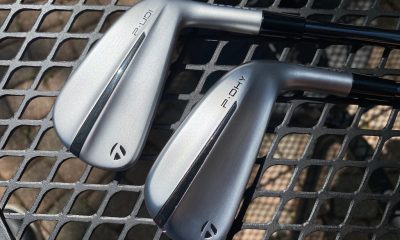


















rjvanro
May 19, 2019 at 1:53 pm
FRIGGIN AMAZING how people get on the threads to bash, show off their “book knowledge” and make themselves feel better. Especially to over-generalize. This article reflects a well-rounded philosophy that looks at the individual and how their musculature influences their ability to move the club. In addition it is a breath of fresh air to not hear the sexy “fad” phrases that have lately become nauseating. News flash !! Mobility, stability and strength are dependent upon one another. It’s not about whether a person can golf really well in spite of their limitations. I can perform most athletic skills on the planet but that does not mean I am an expert in any of them. Personally I have realized speed gains by utilizing heavy low reps and regaining strength. Obviously every golfer will have different needs. …. omg now i am bashing. Time to watch Brooks crush some pencil necks. 😉
BW
May 18, 2019 at 12:54 pm
It’s pretty frightening that you don’t seem to understand the difference between strength and power and how it applies to golf. You cannot train for hypertrophy and power at the same time. You have to do one at a time. After a hypertrophy phase you should be able to go into a higher power output phase (if done correctly).
Kevin Esperanca
May 19, 2019 at 3:13 am
This is not 100% correct. You can undulate the periodization to increase both power/strength and hypertrophy simultaneously in a meso/macro cycle. Is it optimal for a golfer? Maybe, maybe not. Getting stronger/powerful and building muscle overall (Brooks) has not shown to be a negative aspect of golf clearly.
In a traditional program, yes, you would have blocks for each, power and hypertrophy. To say it’s “frightening” for his article is definitely not fair.
I am a trainer with basic programming knowledge and also TPI certified. Any golf fitness article that puts an emphasis on assessing and programming should be praised and not bashed.
Brian
May 18, 2019 at 12:39 pm
“That lead me to seriously question the widely accepted concept of stronger = more powerful”
Widely accepted by whom? Power is strength + speed. Rarely does a healthy adult male need more pure strength to hit a golf ball farther. It’s more mobility + stability that enable more speed vs. pure strength training.
Nack Jicklaus
May 18, 2019 at 11:02 am
When I was just out of high school and weighed 140 lbs, I hit the ball pretty long. Over the next ten years I got a lot stronger and got up to 185 lbs but never added any distance at all. I went backwards a little actually, so I guess Cam Smith is not the only one who got slower with more size and strength.